Skopje Unfinished 2014-2018
Back in 2014 Architectuul discussed development break points of Skopje at the XVII. Macedonian Architecture Biennale and discovered how past, present and future development influenced / will influence on architecture of three different generations of architects: Mitko Hadjipulja (1957), Slobodan Velevski (1976), Martin Panovski (1975) and Filip Dubrovski (1983
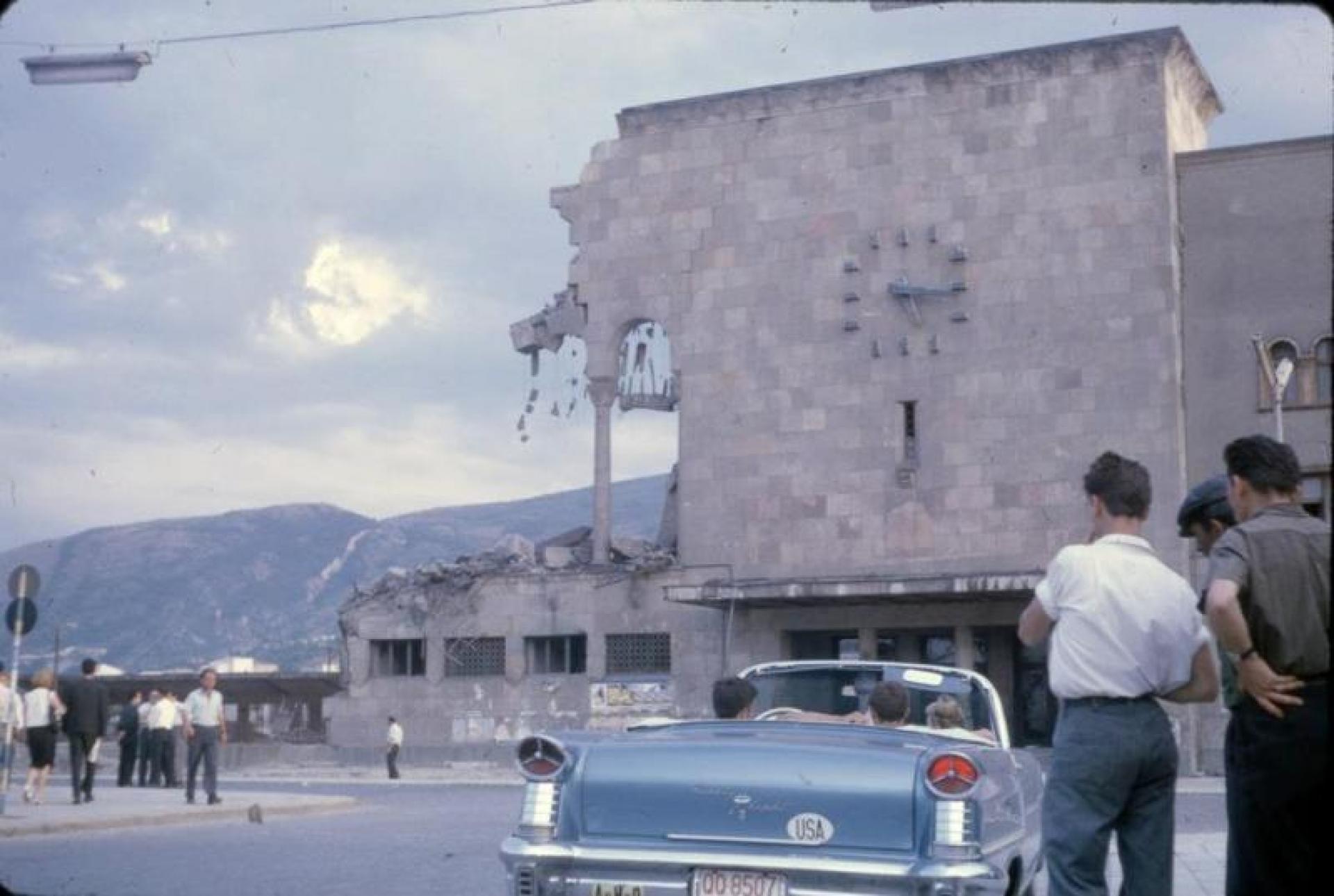
Skopje railway station was destroyed during the earthquake in 1963. The clock stopped at 5:17am when the first wave hit the city. | Photo via Skyscrapercity
The first break point of Skopje development represents a first but never realized city plan by Dimitrije T. Leko in 1914. The plan defined the new style of the city, which developed European rather that Oriental character.

Spatial proposals for the central area of Skopje; left Leko’s proposal (1914), right Tange’s central city area model (1966). | Photo via Bakalchev
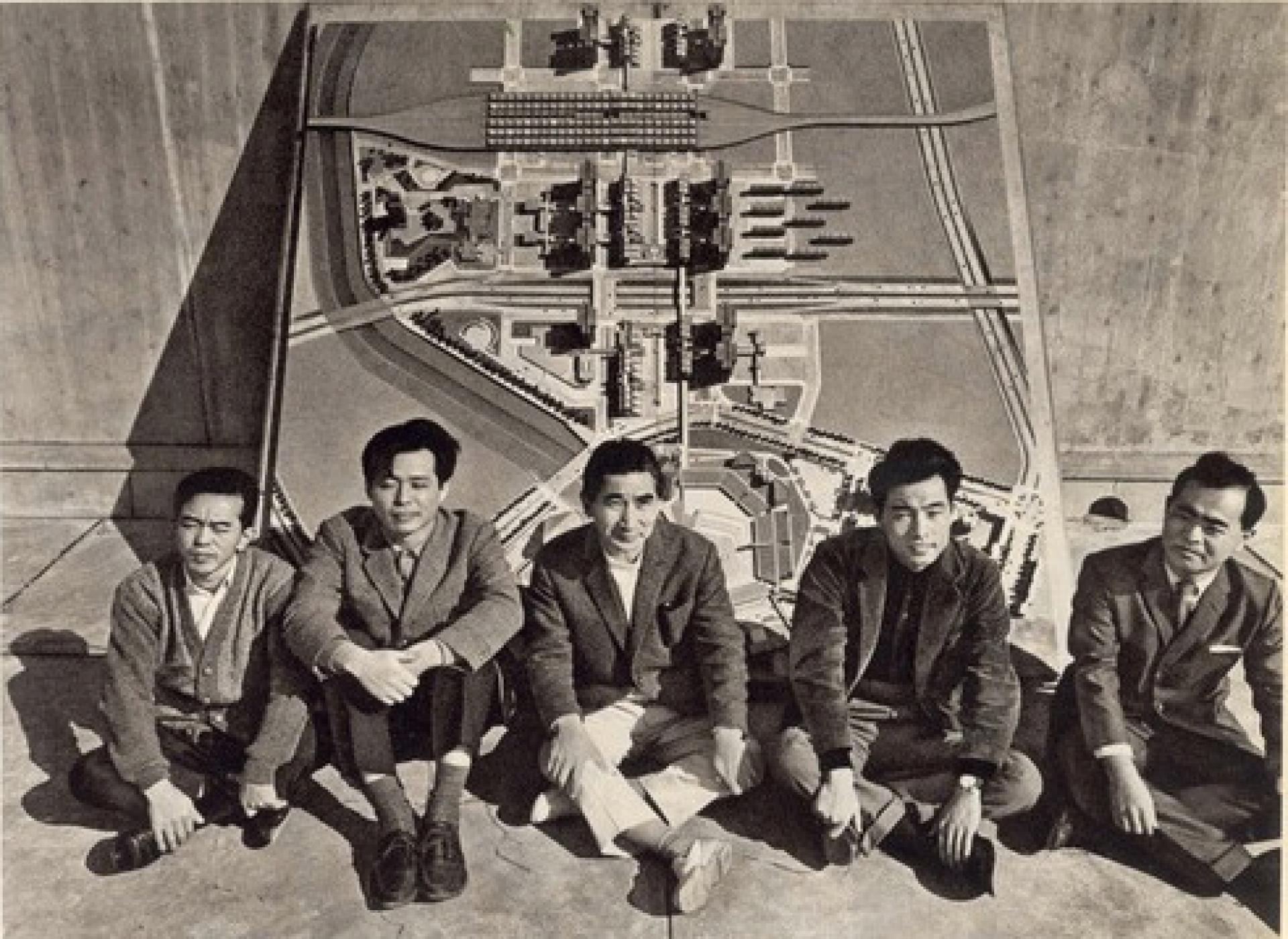
Kenzo Tange (centre) and his team, in front of their plan for Skopje reconstruction after the earthquake. | Photo via Templates of consumption
The second break point happened in 1963, after the earthquake when the continual urban development has enabled Skopje to make a swift transition to a modern developed city.
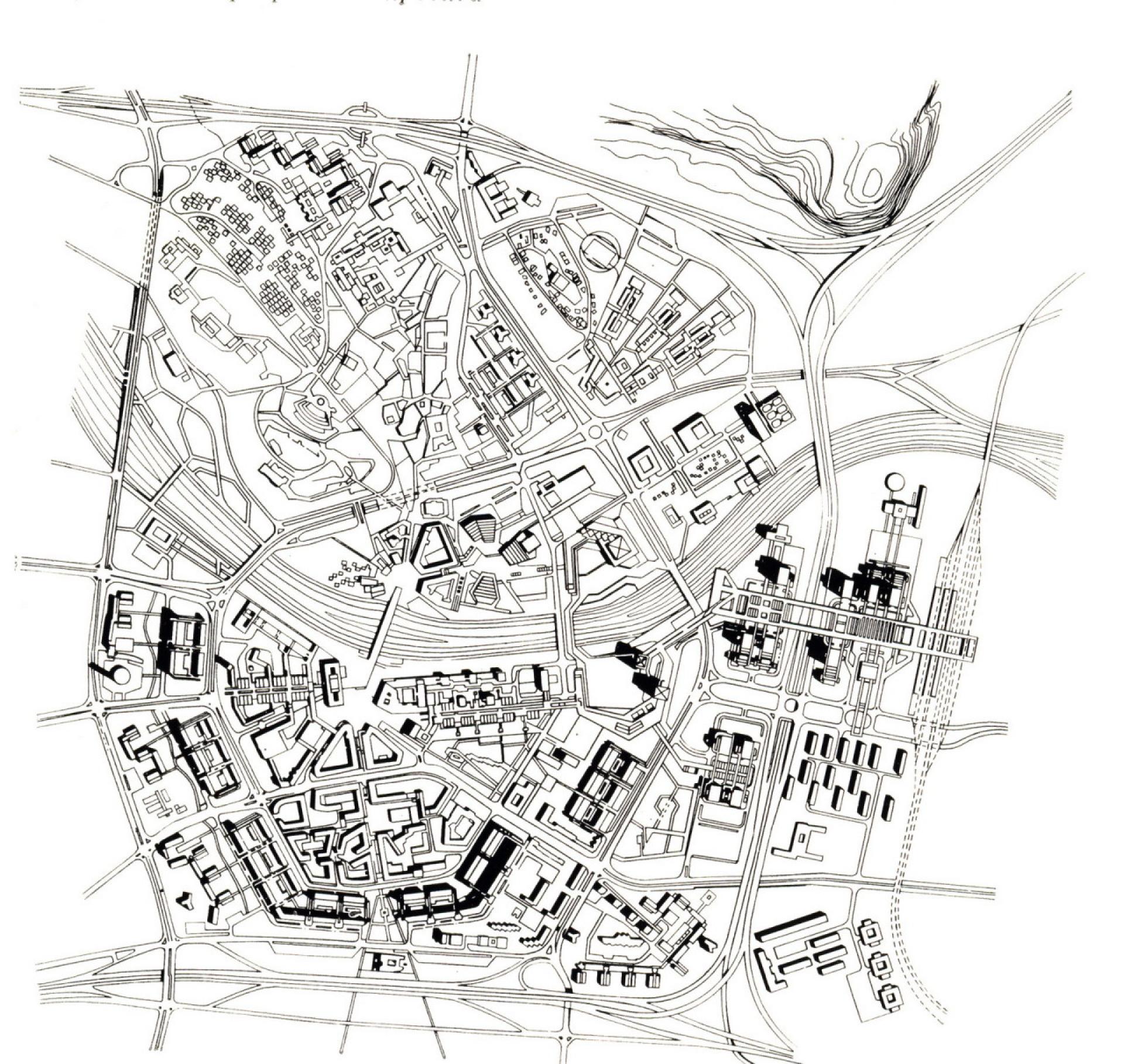
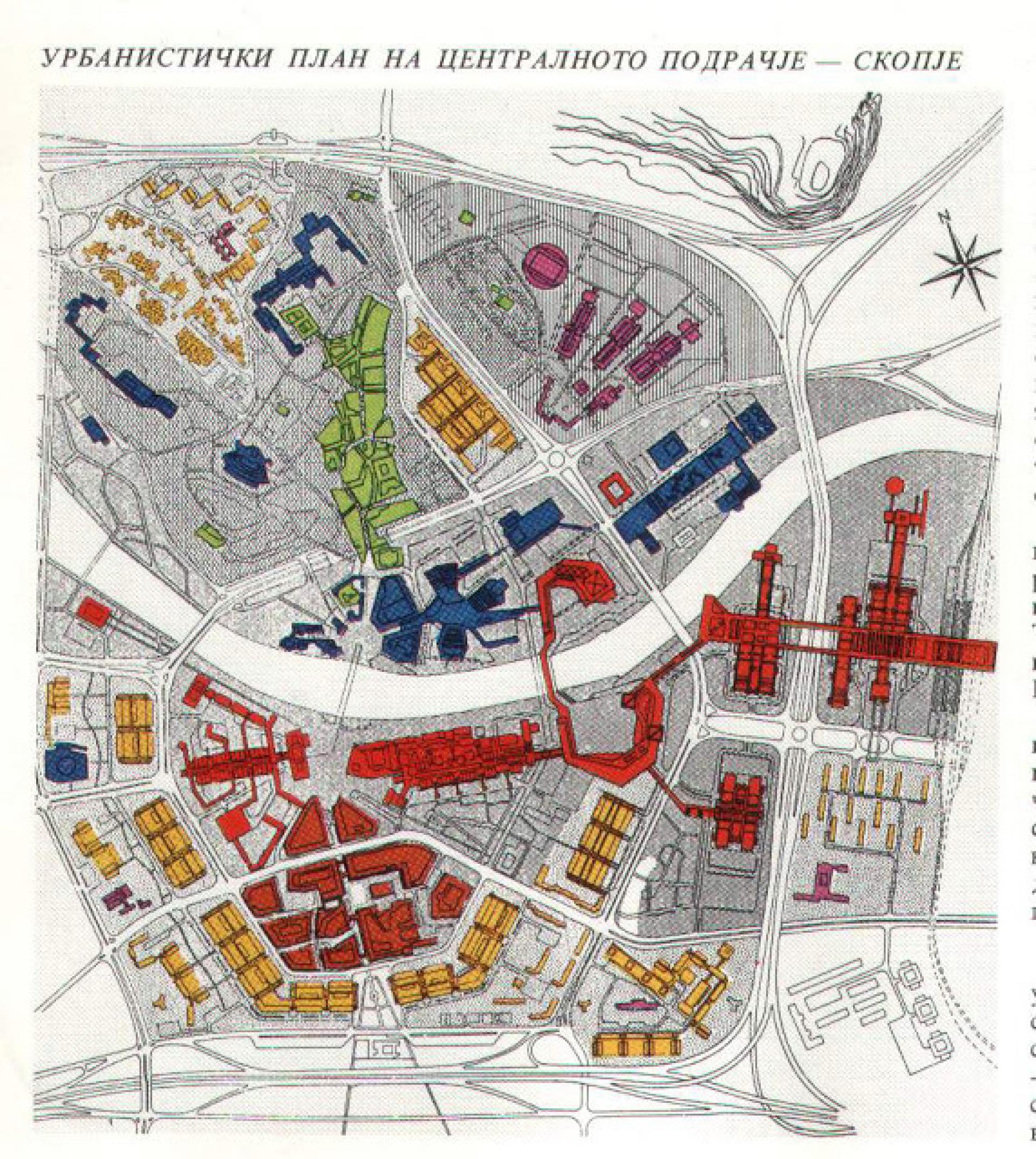
Tange’s concept of a city wall from apartment blocks, with a city gate formed by a new train station was not fully realized | Photo via Templates of consumption
The third breaking point represents time after the Macedonian independence and the beginning of the transition period in the 1990s. This was a time of big social, economic and political changes. For this time is also characteristic an autocratic behavior of private investors which started to deconstruct the modernist city in favor of the historization of the city in neoclassical style.
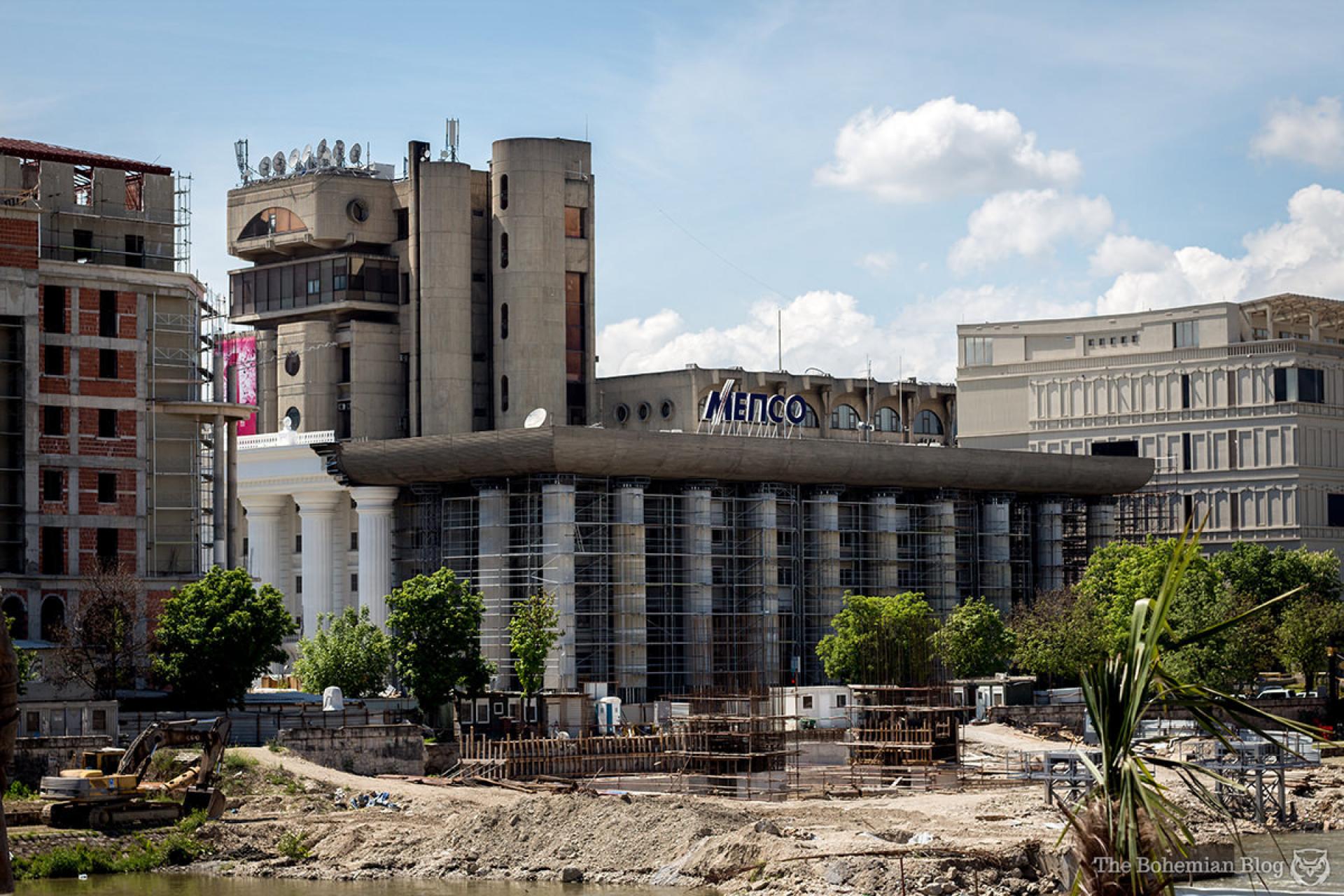
Neoclassical reconstruction of Skopje Administrative Court; beyond the post building designed by Kenzo Tange. | Photo via Bohemian blog
Exactly 100 years after Leko’s plan a new political project Skopje 2014 has been institutionalized by the state. The grotesque image that has been created by applying historical facades on some of the most important works of modern architecture in the center of Skopje has been carried out despite strong protests. Skopje 2014 is therefore not only an architectural phenomenon but is above all a political and social phenomenon.
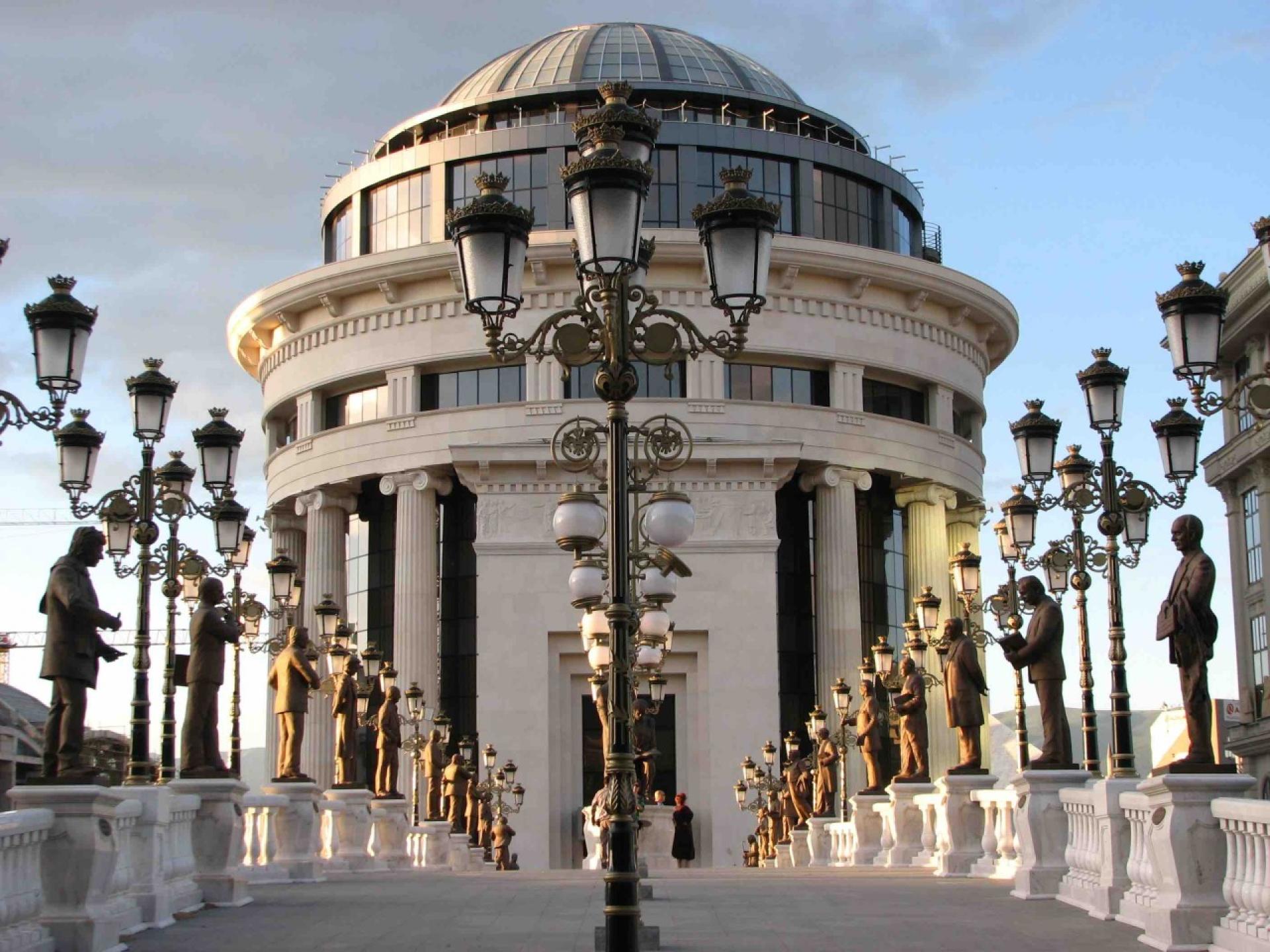
A view over the bridge to the new building of the prosecution in Skopje. | Photo via Worldwidekitsch
Skopje is therefore no longer a city of the future as was visionary planned by Kenzo Tange and his team in the reconstruction plan. There were strong but fragmented creative opposition to the process of historization of the city where activist groups The First Architecture Brigade, Forum Skopje and single artists who were inspired by Skopje’s rebuilding past like Yane Calovski, Hristina Ivanoska, Oliver Musovik, Filip Jovanovski and others were united in their intellectual opposition to the government proposal.
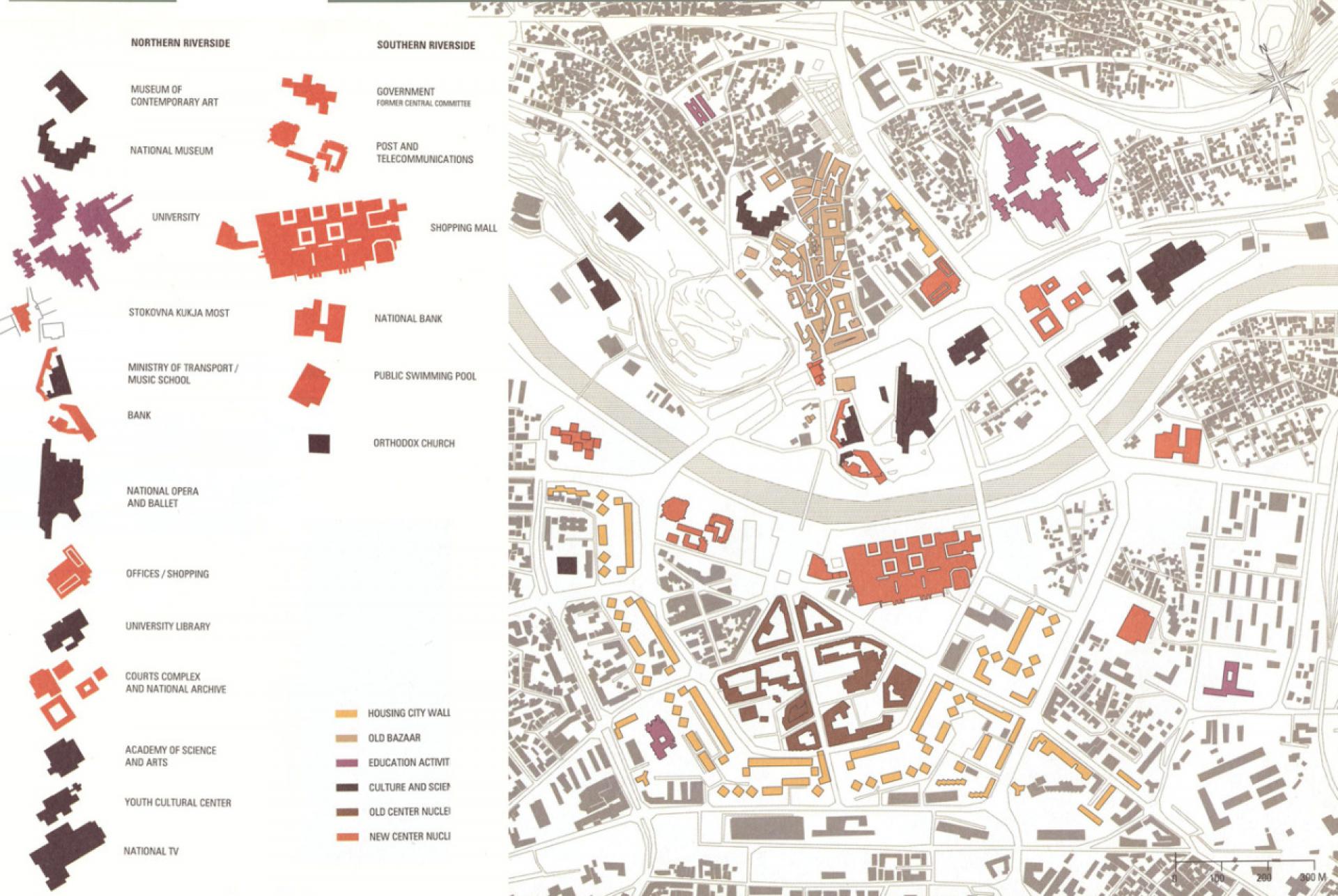
Skopje has been developed in order of unclear vision because of corrupted politics. | Photo via Mijalkovic
How modernist basis in Skopje started to disappear? The Macedonian government has decided to build an Orthodox church with public financing on the main square of Skopje in 2009 in spite of disapproval of citizens and numerous online campaigns and discussions.
Student group Arhi Brigade organized a protest with the slogan “Don’t rape Skopje!” against the construction of the church with public finances.
Later on, the extensive construction activity of Skopje 2014 project (SK2014) rebuild the city with 28 new buildings, 6 multistory garages, 34 monuments, 5 squares, a panoramic wheel, 2 underground garages, 4 bridges, 39 sculptures, a triumph art and 2 fountains. Former prime minister Nikola Gruevski used the Skopje 2014 project as a physical manifestation of his campaign of nationalism, oppression and excess.
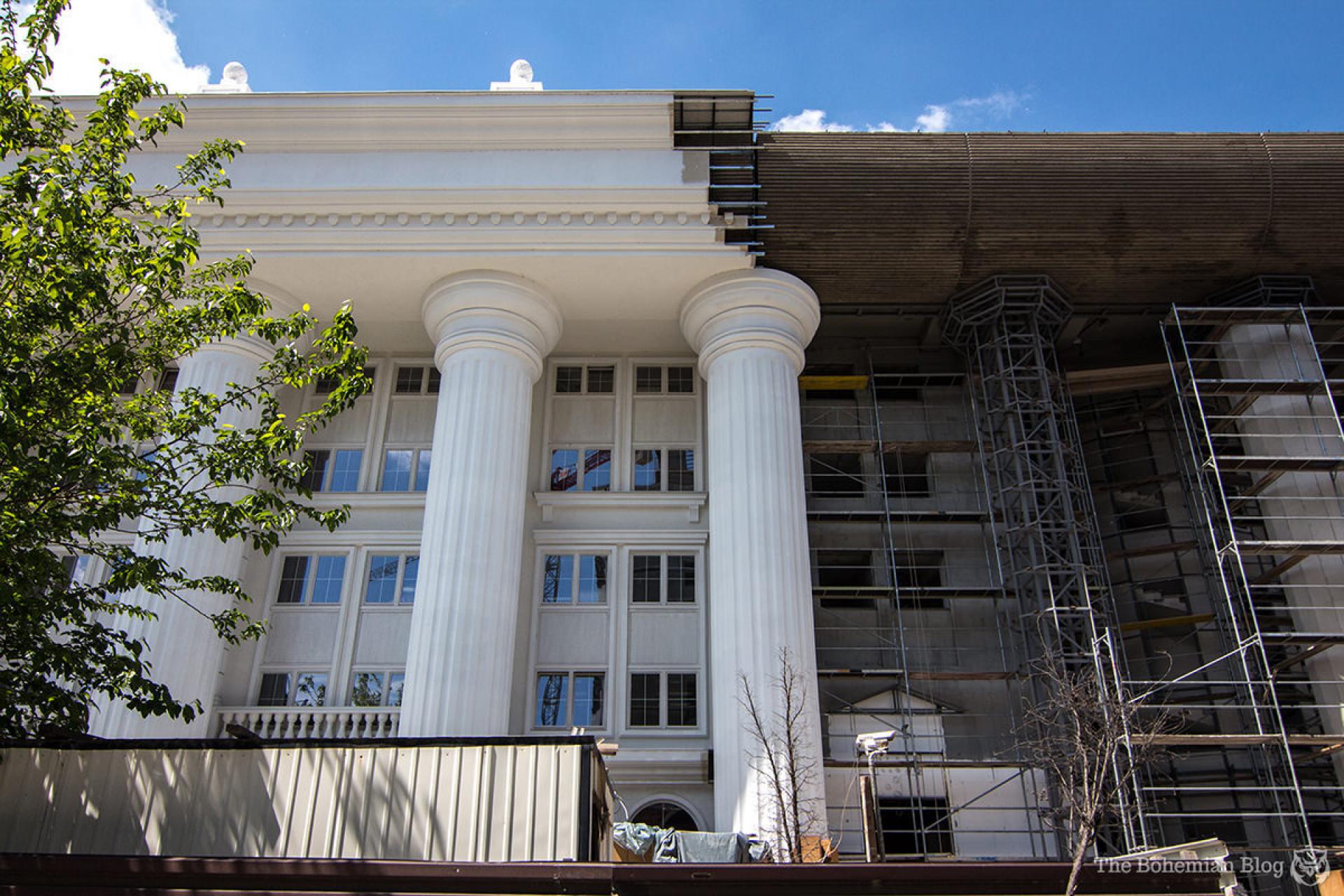
Therefore a Colourful Revolution become an expression of desperation, a vote of no-confidence in a regime accused of building a security state, spying on its citizens, covering up its own crimes and spending a fortune on ridiculous buildings that nobody asked for. In 2016 some activists began pelting Skopje’s Triumphal Arch with paint – and the idea quickly caught on.

Marks of the colorful revolution on the Skopje’s Triumphal Arch, which reconstruction has costed 6.2 million EUR. | Photo via Bohemian Blog
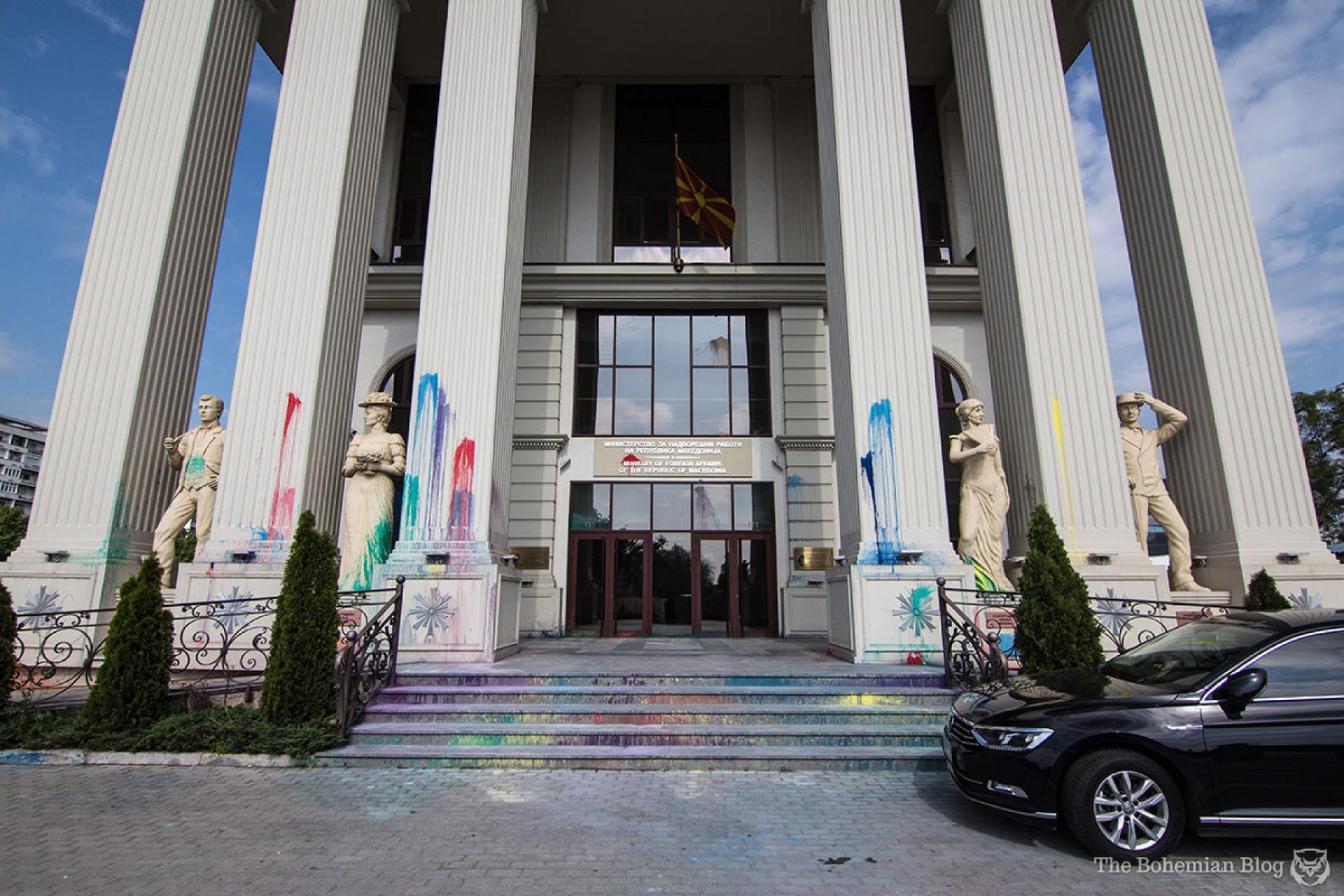
The reconstruction of the Ministry of Foreign Affairs of the Republic of Macedonia has costed 19.9 million EUR. | Photo via Bohemian Blog
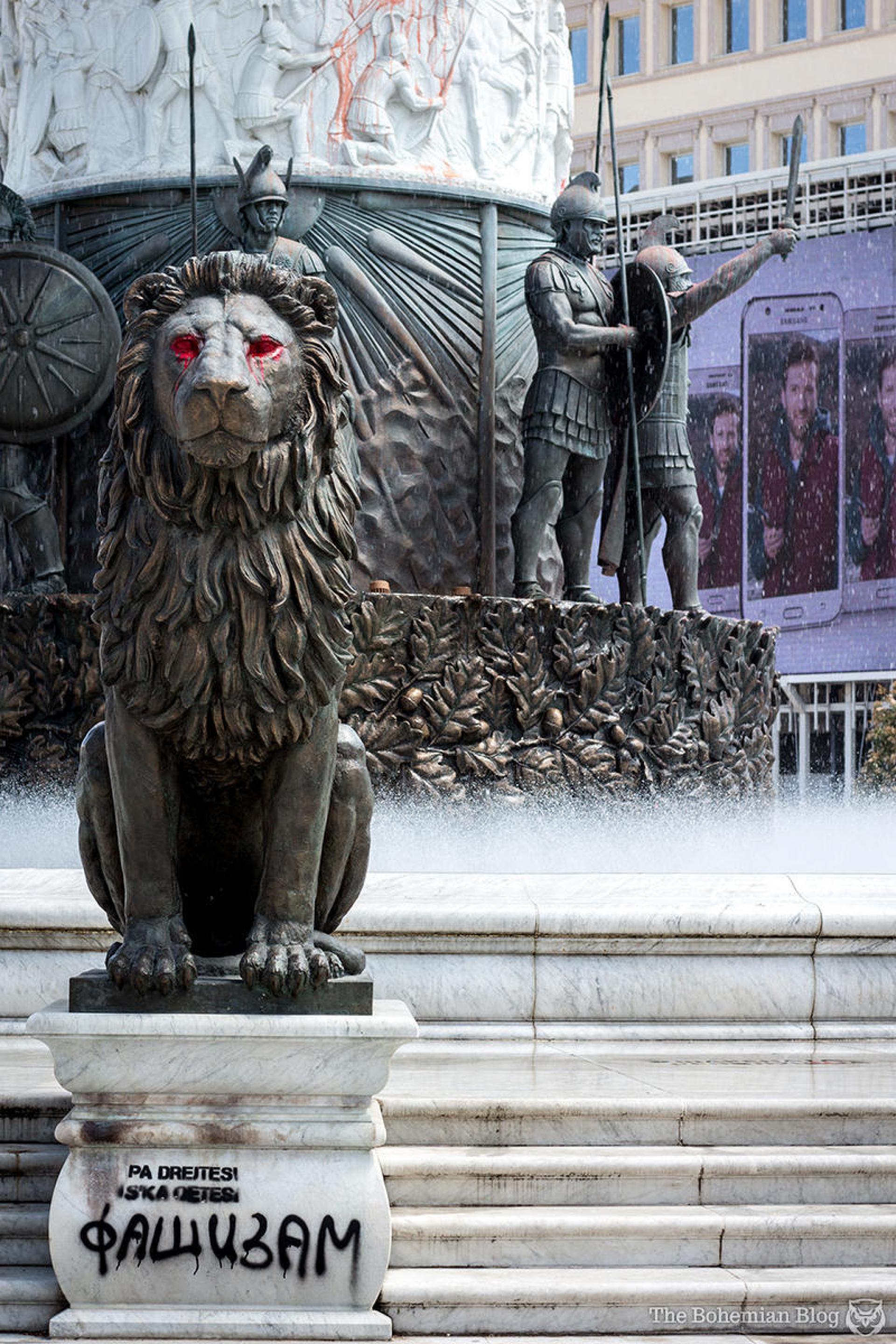
“Fascism” graffiti on the reconstructed fountain. | Photo via Bohemian Blog
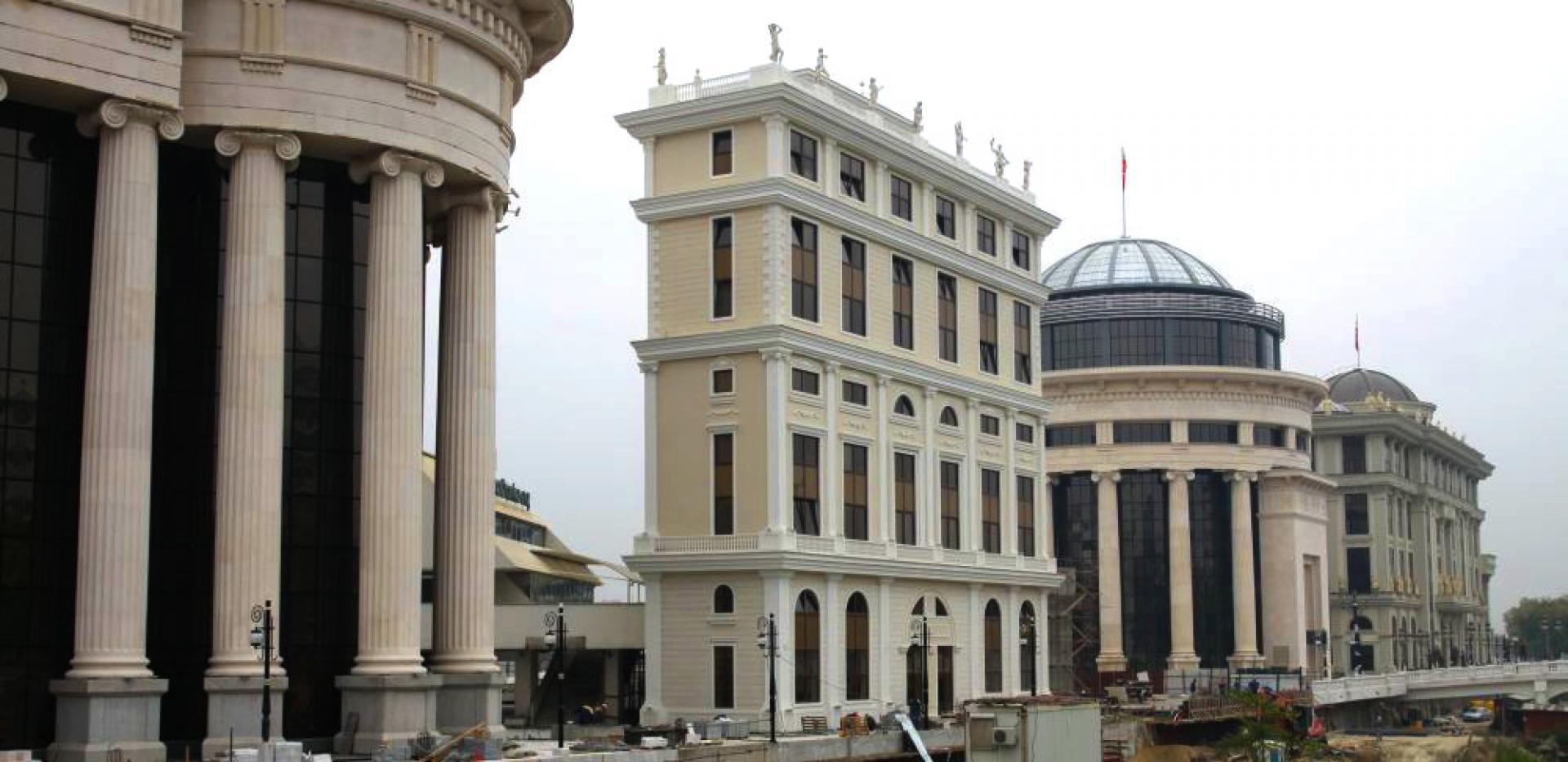
Skopje reconstruction (from left): Archeological museum, behind modernist opera and ballet, financial police and building of the new ministry of foreign affairs. | Photo via Worldwidekitsch
In 2018 we met Slobodan Velevski as a curator of the Macedonian pavilion at the16th International Architecture Exhibition – La Biennale di Venezia. Together with Marija Mano Velevska are discussing the concept of freedom and ethics as discursive trajectory of architecture and space in the project Freeingspace. “The title itself embraces a double meaning: besides the one that sees freeing as an active form, or an act of operation, the prefix freeing – as an adjective describes and defines a space that sets free, indicating the immanent potential of space to create a sense of freedom, explain Slobodan and Marija.

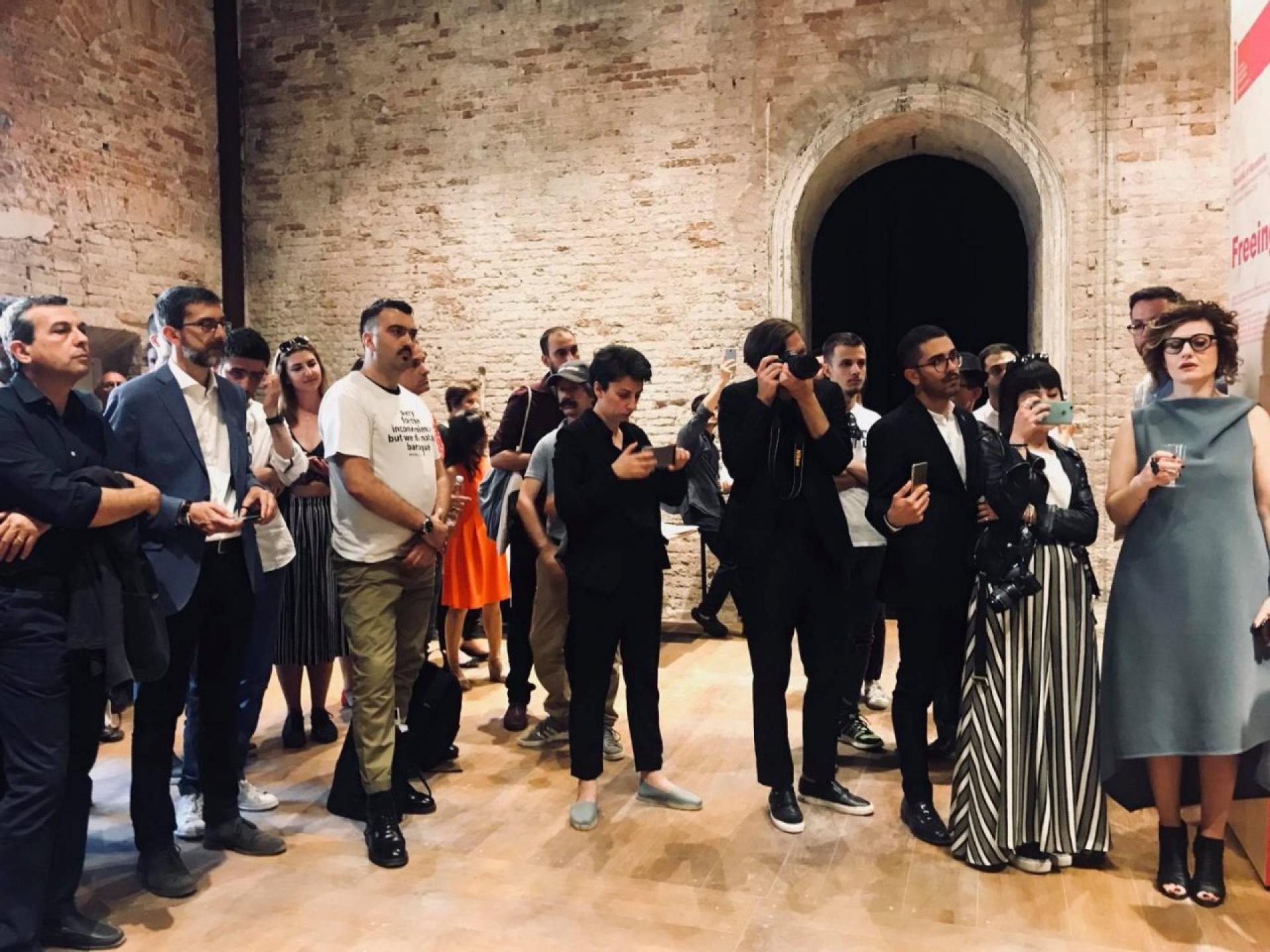
Freeingspace departs from the processes of transformation that the city of Skopje has been subjected to in its encounter with the general concept of modernity. For that reason, Freeingspace is a story of liberating publicness where architecture takes the front role in reclaiming the spatial unity of the city. In the framework of the unsolicited call for ideas, key built interventions of SK2014 are being reviewed in distinctive fragments, contrary to the imposed comprehensive tendency to solidify space. Through a precise selection of this ‘spatial heritage’ and by deconstructing its notional pattern, the value of fragments is re-introduced, using architecture as a medium that retroactively regenerates the city collective.
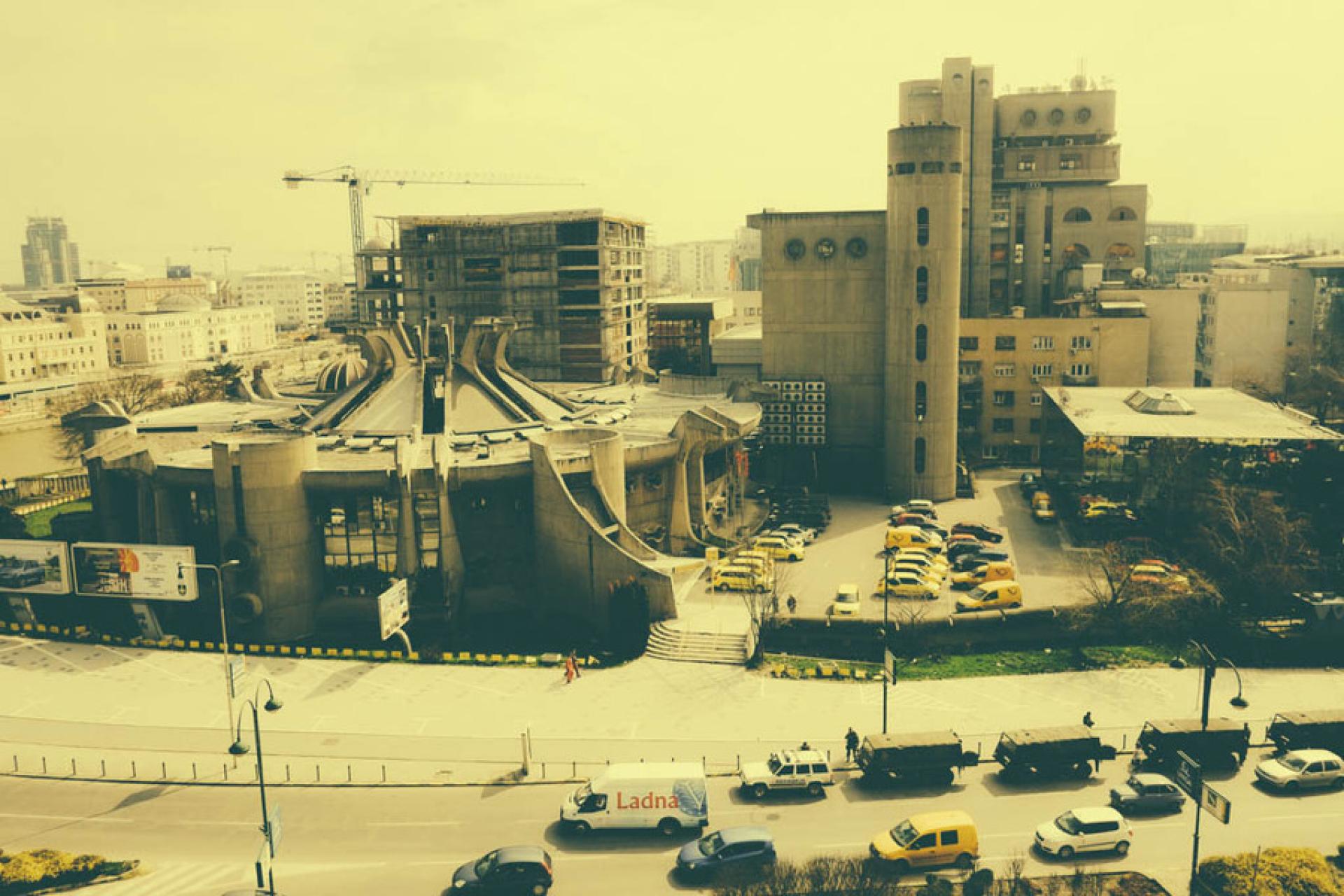
Overview of the Skopje Central Post Office complex. | Photo by Nate Robert
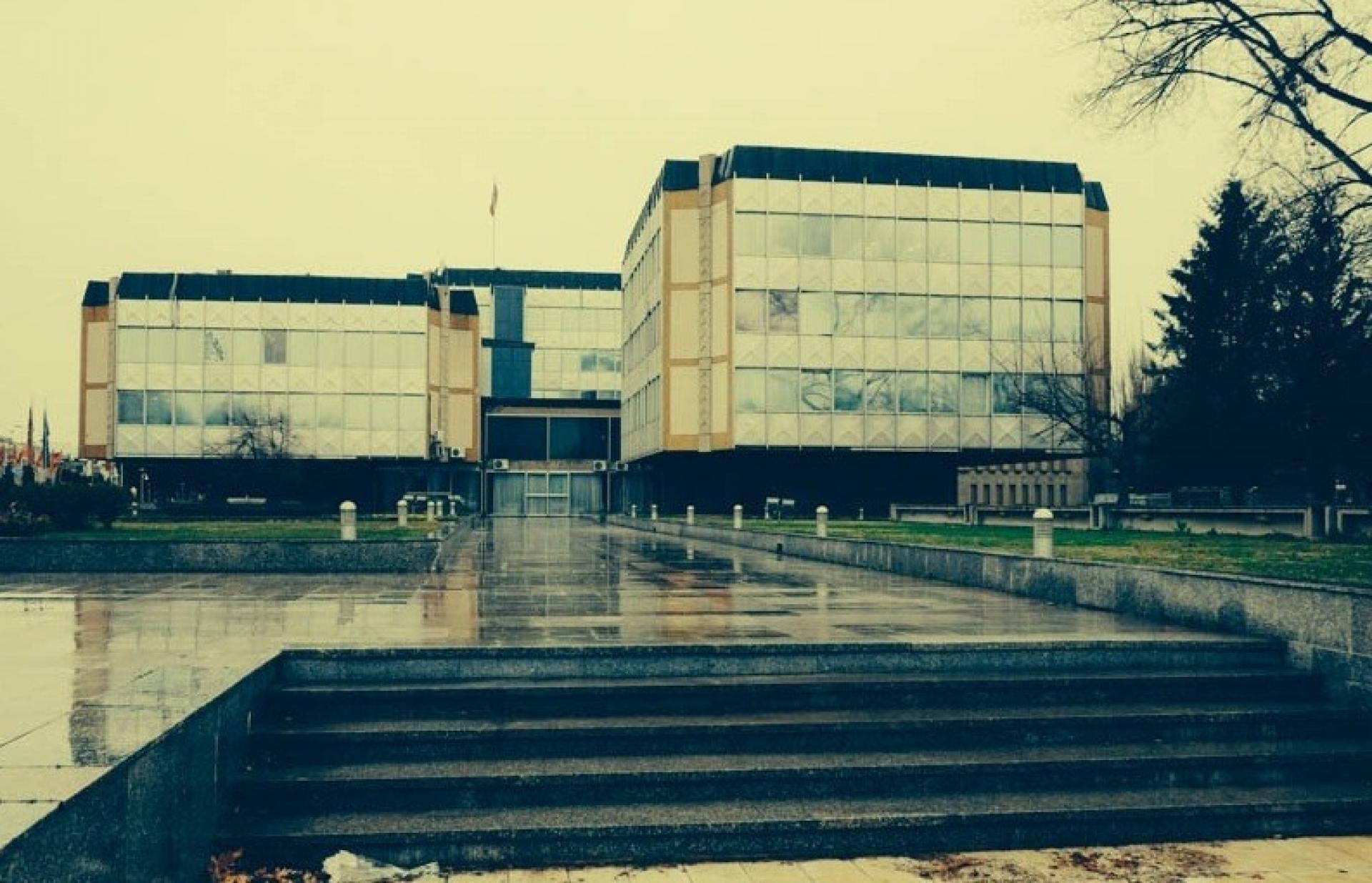
The modernist Government building doesn’t exist anymore. | Photo via Yomadic
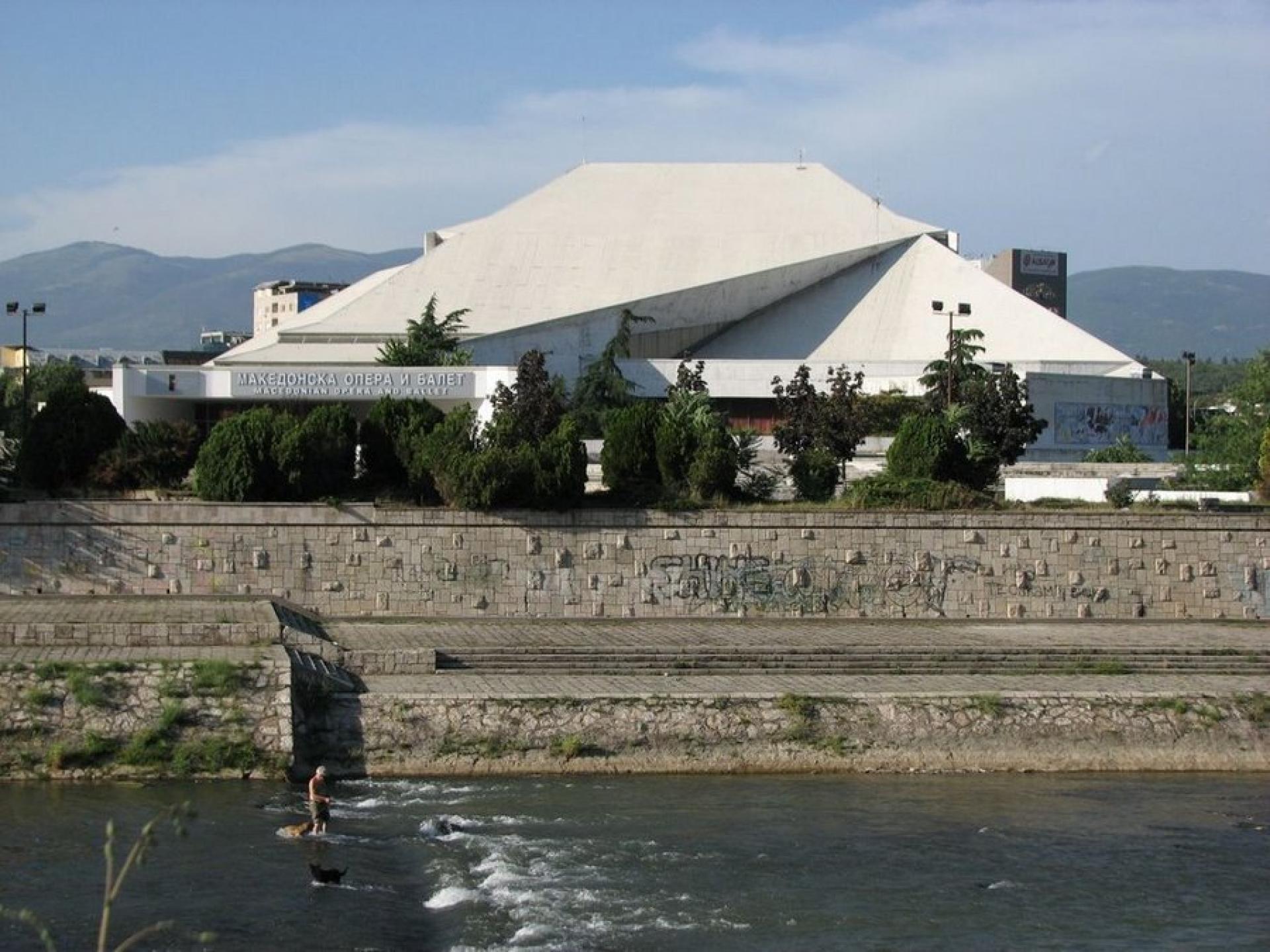
The modernist building of the National Opera and Ballet lies today behind the new neoclassical Ministry of Foreign Affairs. | Photo by Ioannis Tsoukalas
The exhibited Freeingspace projects at the Venice biennial objectify the meaning of public buildings as public spaces. The curators took four distinctive sites within the inner city area of Skopje, which are exemplifying architecture as a heroic outburst when originally builand as mere representational commodity in its recent recast. Freeingspace is a conceptual prosthesis that transcends repulsive contradictions by means of re-thinking instead of erasing.
—
References
- M. Bakalchev et al. (2015). Forgetting the City: Tactics of Transformation of the City in Motion. Open Urban Studies and Demography Journal, Vol. 4, p. 72-83
- S. Jovanović Weiss, A. Linke (2010). Skopje will disappear. Redazione Abitare.
- M. Panovski (2014). The Three Break Points. Architcetuul.
- M. Mijalkovic, K. Urbanek (2011). Skopje - the World’s Bastard; Architecture of the Divided City, Wieser, Klagenfurt.
- S. Velevski, M. Mano Velevska (2018). Freeinspace. Curatorial statement, Macedonian pavilion 16th International Architecture Biennial Venice.
- D. Richter (2016). Skopje’s ‘Colourful Revolution’: Fighting Tyranny with Street Art. The Bohemian Blog.